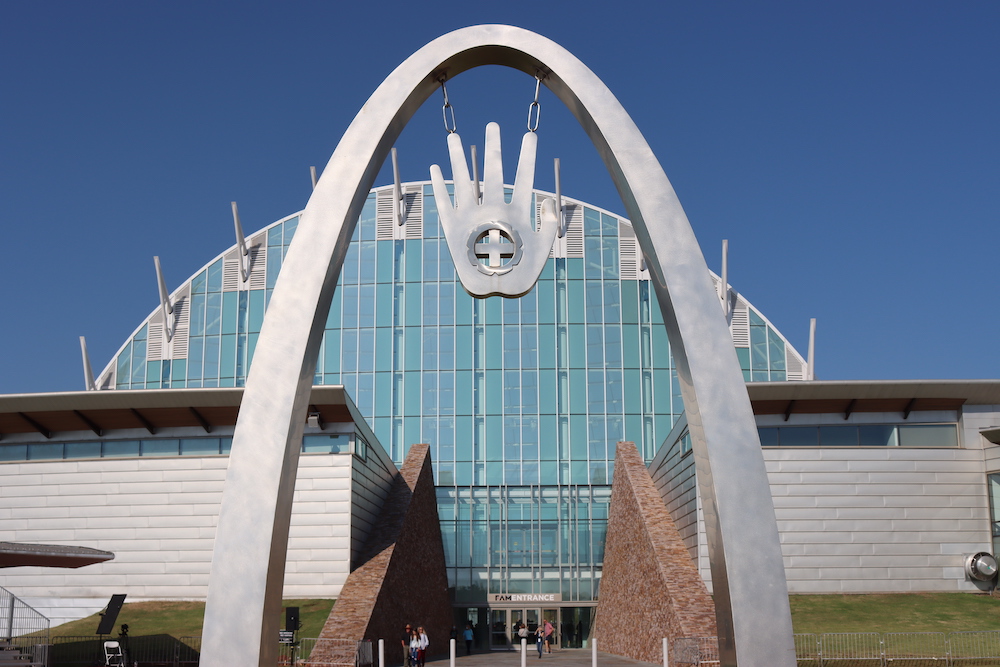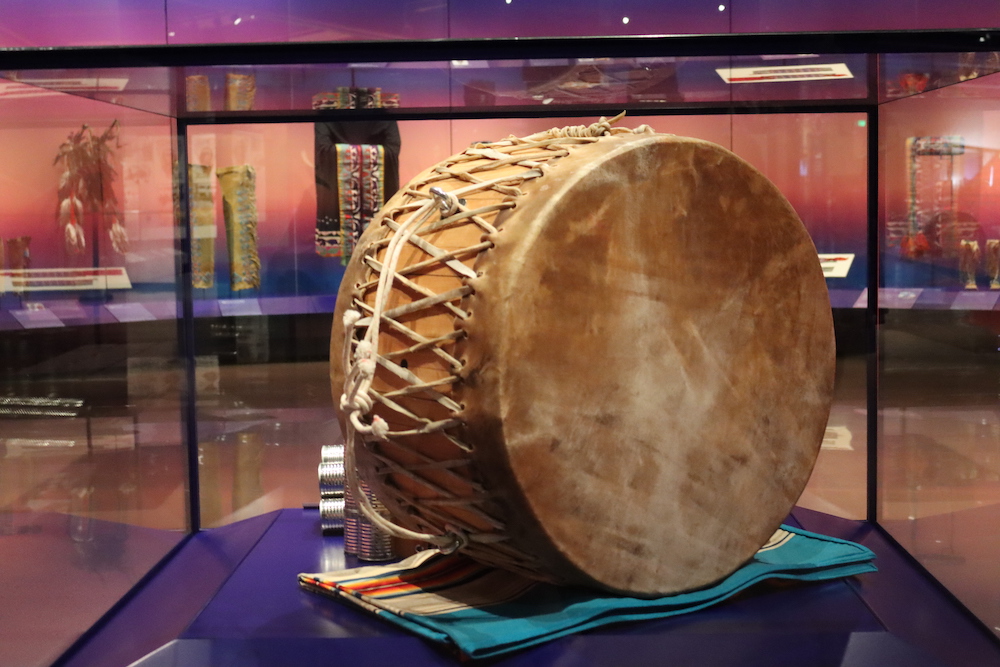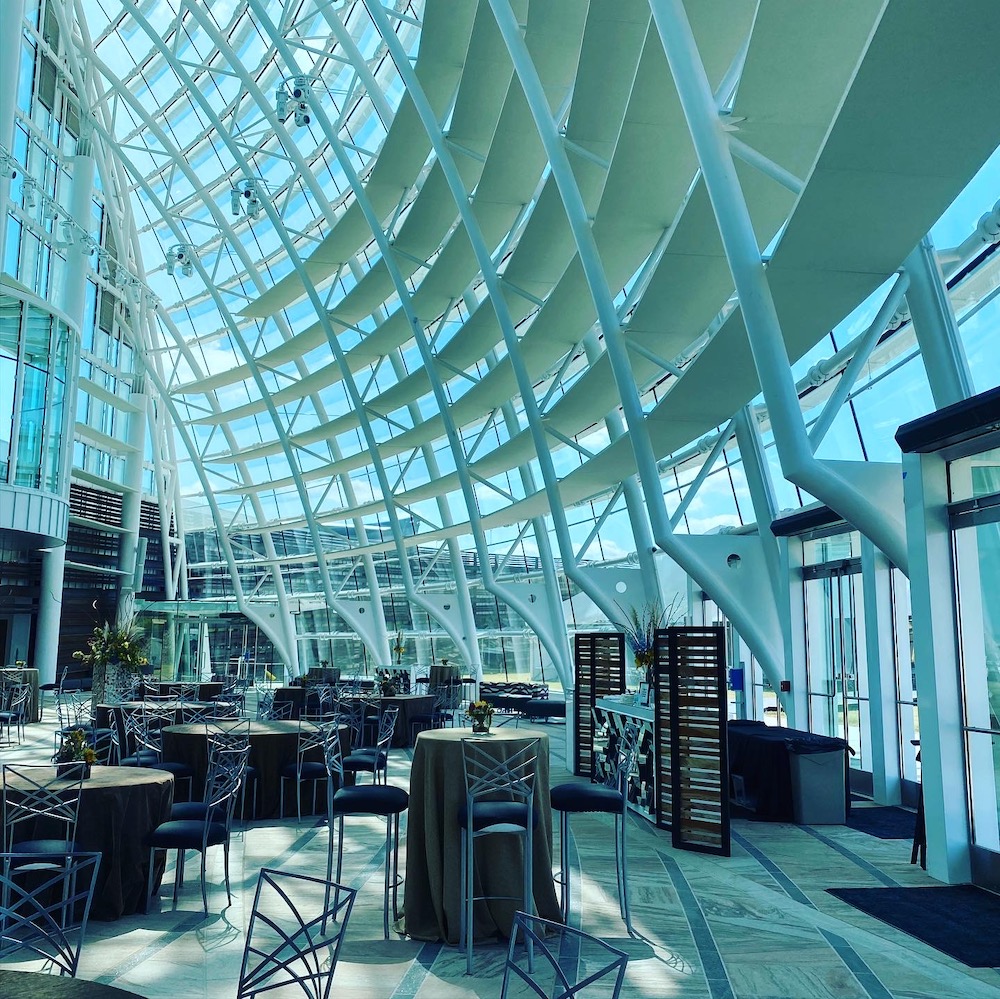
- Details
- By Darren Thompson
Oklahoma City, Okla.—Nearly three decades in the making, the First Americans Museum finally opens it doors this weekend, kicking off a busy weekend of activities with a procession featuring delegates from each of the 39 Tribal Nations in the state of Oklahoma.
The tribal procession begins Saturday at 10:30 a.m., with formal recognitions to follow by Governor of the Chickasaw Nation Bill Anoatubby, Mayor of Oklahoma City David Holt (Osage), United States Poet Laureate Joy Harjo (Muscogee) and other museum leaders.
Want more Native News? Get the free daily newsletter today.
“On Sept. 18, 2021, the First Americans Museum is set to welcome its first guests to its cultural storytelling experience steeped in history and heritage,” the First American Museum wrote in a statement. “FAM has worked with tribal volunteers and community partners to create a unique and culturally rich experience.”
Performances, demonstrations, and other activities throughout the museum campus include interactive art activities, field games, youth poetry, dance performances, tribal demonstrations, fashion shows, cooking demonstrations, storytelling teepees, and live music. Two buildings make up the First Americans Museum campus: the 175,000-square foot museum and the 4,000-square foot FAM Center, which will serve as an educational resource center.

The museum cost $175 million to construct, with funds coming from public and private sources. The concept was first pitched in 1994 by Oklahomans for Indian Opportunity, an organization that represented 28 tribes in the state. The tribes wanted to develop a cultural center along the Oklahoma River near where Interstate 35 and Interstate 40 connect. Stakeholders selected the site along the Oklahoma River in September 1998.
Building the museum took the better part of two decades to complete, with stops and starts along the way. Construction began in 2006, but stopped in 2012 when funding for the project ran out and the state of Oklahoma decided to stop paying for the project after a reported $90 million had already been spent on the project. The museum and cultural center sat half-finished until 2019, when the city and the Chickasaw Nation struck a deal.
Because of rising infections of the Covid-19 delta variant, the opening is capped at 7,000 with no more than 3,500 admitted each day of the weekend.
Internationally known architecture firm Johnson Fain, based in Los Angeles, worked in collaboration with Hornbeek Blatt, a local firm with offices in Edmond, Oklahoma.
The museum and culture center showcases state-of-the-art exhibitions in First American history, culture and art, will host live public and educational programs, provides a full-service restaurant and an express café offering unique Native-inspired cuisine, and a museum store featuring exclusive items created by premiere First American artists that can only be found at FAM.

One of the exhibits has items from each of the state’s 39 tribes from the Smithsonian’s National Museum of the American Indian. All of the items on display from the Smithsonian were welcomed and prayed for by all of their descendants, as it was the first time the items have been among their relatives and in Oklahoma in more than 100 years.
“We are thrilled to share with the public a premier venue dedicated to the history, art and cultural lifeways of First Americans in Oklahoma,” James Pepper Henry, FAM director and CEO said in a statement. “Those who attend the Grand Opening will be among the first to experience a national treasure that will be enjoyed for decades to come.”
Due to expected large crowds, opening weekend tickets must be purchased in advance. Tickets are $5 per person, per day and can be purchased online at www.famok.org.
More Stories Like This
Native News Weekly (August 25, 2024): D.C. BriefsUS Presidents in Their Own Words Concerning American Indians
Two Murdered on Colville Indian Reservation
NDAA passes House; Lumbee Fairness Act Advances
NFL, Vikings to Host Native All-American Game, Youth Flag Clinic
Help us defend tribal sovereignty.
At Native News Online, our mission is rooted in telling the stories that strengthen sovereignty and uplift Indigenous voices — not just at year’s end, but every single day.
Because of your generosity last year, we were able to keep our reporters on the ground in tribal communities, at national gatherings and in the halls of Congress — covering the issues that matter most to Indian Country: sovereignty, culture, education, health and economic opportunity.
That support sustained us through a tough year in 2025. Now, as we look to the year ahead, we need your help right now to ensure warrior journalism remains strong — reporting that defends tribal sovereignty, amplifies Native truth, and holds power accountable.
 The stakes couldn't be higher. Your support keeps Native voices heard, Native stories told and Native sovereignty defended.
The stakes couldn't be higher. Your support keeps Native voices heard, Native stories told and Native sovereignty defended.
Stand with Warrior Journalism today.
Levi Rickert (Potawatomi), Editor & Publisher
